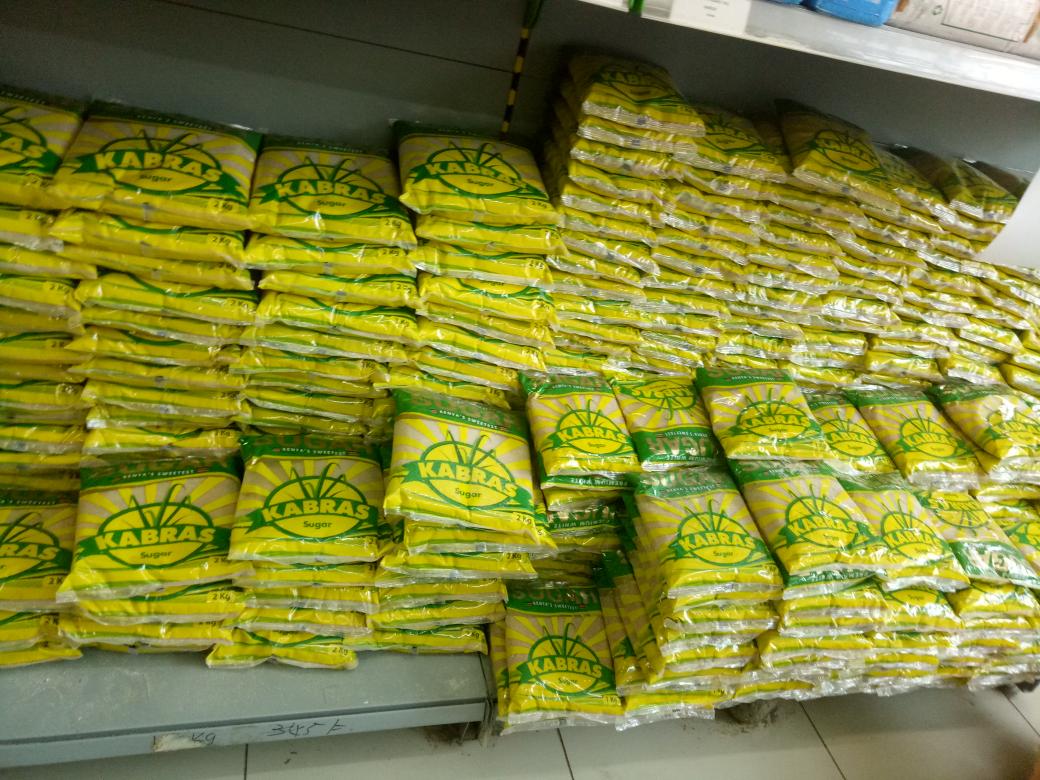High sugar cost adds sour taste to households
By Nicholas.Waitathu, October 12, 2022The cost of sugar has increased by more than 30 per cent in the last one month further compounding challenges Kenyans are grappling with in terms of high food prices.
For the last one month, sugar prices have risen by between Sh30 and Sh40 per kilogramme despite a promise by the new Government to lower the price of commodities in their 100 days in office to relieve Kenyans of the burden of high cost of living.
By mid-September, a kilogramme of brown sugar was retailing at between Sh125 and Sh130. But following the biting shortage of the commodity globally, the prices have increased to between Sh157 and Sh165 per kilogramme pushing Kenyans almost to the corner as cost of living continues to escalate.
This has made it difficult for Kenyans to buy the commodities among others as their buying ability is interrupted.
Retail Trade Association of Kenya (RETRAK) chief Executive Officer Wambui Mbarire attributed the situation to supply challenges. “As I have said often, we have a supplier market. Prices are generated by them. These are supply challenges,” said Wambui on phone yesterday.
Director of sugar directorate of Agriculture and Food Authority (AFA) Willis Audi said the ongoing global sugar scarcity has contributed to increase in local prices.
“There is a general shortage of sugar in the world. Sugar deficit countries like Kenya are suffering greatly out of the shortage,” said Audi.
Brazil which is one of the leading sugar producers in the world have in the past few years registered dismal production performance contributing to the global shortage. Other major producers of sugar globally include India, EU-27, China, USA, Thailand, Russian Fed., Mexico, Pakistan and Australia.
Audi stated that Kenya is a sugar deficit country and thus has to rely with imports largely from the Common Market for Eastern and Southern Africa (COMESA).
“Kenya produces slightly over 800,000 metric tonnes of brown sugar against a consumption of over one million tonnes. The deficit is normally realized from imports sourced from the Comesa region,” he added. But following the ongoing shortage globally Audi explained the Comesa region is suffering a lot in terms of production owing to the international scarcity.
He explained, “The Comesa countries are instead selling their produce to other global regions, for example, in the European Union where the prices are said to be very lucrative. In the EU Prices are said to be higher by US$20 compared to prices within the region. The diverting of the commodity to other markets has contributed to acute shortage of the produce and thus denying countries that benefit from quota sanctioned by the regional bloc secretariat every year.”
Comesa imports
For instance, Kenya ought by the end of September to have imported from the Comesa countries 135,000 metric tonnes of sugar but importers have managed only to bring in 80,000 metric tonnes. Kenya allows 100 per cent importation of refined sugar for industrial use by various manufacturers.
At Kariobangi, a kilo is retailing at between Sh160 and Sh170 both packed and local sugar. “Yes, the prices have gone up tremendously for the last one month, but as a trader I haven’t noticed customer reduction. Kenyans have become more resilient even as the cost of living continues to increase. I bought a 50 kilo bag of local food at between Sh7,100 and Sh7, 400 in the last one month. This depends on the manufacturers,” said Martha Muya, a trader in the Kariobangi area.
Audi added that a 50 kilo of brown sugar is currently retailing at Sh7, 000 compared to Sh7,200 at the end of September. A spot check in some of the major supermarkets within Nairobi Central business district revealed that prices have increased to between Sh157 and Sh165 both packed and local sugar. And the outlets did not have adequate stock though uptake of the same by customers is low.
Sarah Kemunto who owns a small hotel in Kawangware market complains that the increase in price of sugar has equally contributed to high cost of production and hence reducing profit margin. “Undertaking of business has of late become difficult owing to the escalating cost of commodities. Sugar is a very crucial component in hotel business and minimizing or lack of the same will contribute to mass exodus of customers to other outlets,” she complained. We are suffering as small traders especially due to the increase of commodities. The current situation signals death knell to our business if it’s not tamed, “Kemunto added.
According to the International Sugar Organisation (ISO) published in August 2022 market report white sugar prices index averaged US$531.8 per tonne down from US$536 per tonne in July 2022.
Currently, there are 15 sugar factories in the country with a combined capacity to process 44,450 Tons of Cane per Day (TCD). Despite these investments, self-sufficiency in sugar has remained elusive over the years as consumption continues to outstrip supply. The deficit is met through importation mainly from the COMESA states. Currently, there are 15 sugar factories in the country with a combined capacity to process 44,450 Tons of Cane per Day (TCD). Despite these investments, self-sufficiency in sugar has remained elusive over the years as consumption continues to outstrip supply. The deficit is met through importation mainly from the COMESA states.
